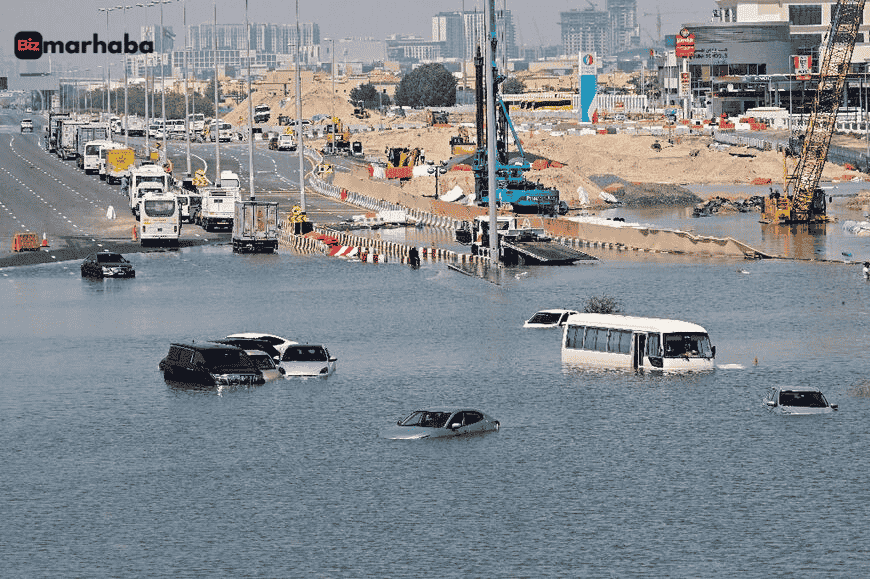The UAE weather has always been a topic of interest to both the residents and the guests of the state, whether it is the sweltering summer in the desert or a sudden rain and the appearance of the rivers on the dry streets. The current weather conditions in the UAE show that the country has relatively clear with some clouds in the sky and humid in the coastal regions and cool in the northern emirates. The recent trend of occasional rains and floods in cities has however brought back the issue of how far the nation can go to handle heavy downfalls in fast growing cities.
The Weather Conditions in the UAE
Local weather predictions show that temperatures are mostly at 30 o C (86 o F) with clear skies and haze in most of the country such as Dubai, Abu Dhabi, Sharjah and Ajman. Some western and northern parts and a possibility of light rain in isolated areas have been predicted to be partly cloudy weather, as forecasted by the National Center of Meteorology (NCM).
The moisture is high and it can reach 90 percent of humidity at night and this can produce fogs or mists in the very early morning. There is light to moderate wind blowing to the northwest, and as some cases bring dust in open deserts.
Although no massive rainfall is predicted today, the nation has been put on high alert after the episodes of heavy rainfalls experienced in some of the regions of Dubai and Fujairah in the previous month.
When Rain Makes It Dangerous: The Urban Flooding in the UAE.
UAE is reputed to have desert lands and a dry climate, however, during the rainy season, even the small amount of rainfall can result in the flood of cities in the UAE. Some of the older neighborhoods were built without facilities to cope with the abrupt and immense rainfall, and therefore roads were closed, and traffic jammed leading to property damage.
Why Urban Flooding Happens
Urban flooding is a phenomenon whereby heavy rainfall fills up drainage systems. In such cities as Dubai, Sharjah, and Ras Al Khaimah, the concrete surface and the low rates of natural water absorption prevent the rainwater to drain rapidly. This leads to quick surface run-off, which collects in the low-lying places and under passes.
The other contributory factors entail:
- A lack of storm water facilities in urbanized areas.
- Blocked drains due to debris and construction material.
- Flat land which is an impediment to natural water flow.
- Global warming which makes rainfalls more intense and unpredictable.
Even 15-20 minutes of moderate rainfall can cause standing water in the residential or on major highways.
The Effects of Flooding on our everyday life.
When it pours in the UAE, life may come to stalemate. Drivers are exposed to flooded roads, flight delays, and education institutions are even forced to go online. There is also water damage and power outage in some regions which disrupt businesses.
The floods that hit the UAE in 2024 were the worst in 75 years of history, and the wake-up call. Dubai and Sharjah experienced unprecedented heavy rainfall that flooded whole parts of the cities causing significant property damages and highlighting the necessity of building more resilient infrastructure against floods.
Efforts and Response by the government to mitigate floods.
UAE authorities have responded with great measures in response to the past incidences of flooding and this has aimed at enhancing the capacity of the country to deal with extreme weather. The city of Dubai, specifically, has initiated one of its most extreme infrastructure projects, the Deep Tunnel Stormwater System which is expected to benefit the city over a period of 100 years.
Key Measures Include:
- Stormwater tunnels and reservoirs: These are enormous underground tunnels that will accumulate and divert rains in city centers to safe disposal areas.
- Real-time monitoring systems: NCM and the local municipalities have a satellite-based technology which is used to forecast the rainfall and provide early alerts.
- Drainage expansion works: New construction in Abu Dhabi and Sharjah are under construction using new system of drains which are expected to manage heavy down pours.
- Public awareness campaigns: The residents should monitor weather warnings, they should not drive when there is a storm, and their property must not be exposed to risk of being damaged by flooding.
These projects demonstrate that UAE is changing its approach to urban planning to create a balance between urban growth and environmental sustainability.
Staying safe during rain and floods:
Irrespective of the infrastructure enhancement, personal awareness will be very important. The following are some of the safety precautions to observe when there is rain or an alert of flash floods:
- Check the weather every day: Monitor the current weather conditions on the NCM site or the application and get instant forecasts and alerts.
- Avoid flooded roads: Depth of water may be misleading – it only requires a few inches to incapacitate a car.
- Park on high areas: Do not leave cars in low areas or stormwater drainages.
- Prepare emergency kits: Provide the essentials, such as flashlights, power banks, first aid and bottled water.
- Slow down and take caution: It is the rain, which minimizes visibility and extends the braking distance.
- Blockages or flooding of reports: Use municipal hotlines to report blockages or flooded streets and drainages.
Preparedness can help people to limit the risk of sudden rain and urban floods to a great extent.
Rain Forecast and Climate Prognosis.
Although the forthcoming weather is projected to have clear and pleasant weather, the period of summer to winter in the UAE is usually unpredictable with regard to rainfall. Light showers can happen during the coming days in Al Ain, Ras Al Khaimah and Fujairah, particularly in mountainous areas where convective clouds are likely to be formed.
The climate scientists estimate that in the next decade, the UAE may experience the rise in the quantity of yearly rain by 10-20 percent due to global warming and cloud seeding programs. Such changes will demand constant drainingage and flood control system upgrades in all emirates.
UAE Weather and Rain Alerts Check.
It is now easier than ever to remain current. You can:
On the National Center of Meteorology (ncm.ae), hourly forecasts are available.
Get UAE Weather mobile applications to have flood and rain radar.
Emergency notices are found on X (Twitter) as well as following the official accounts such as StormCenterUAE or DubaiMunicipality.
These applications will keep you updated and in the case of bad weather, on the roads, roads will be closed and you will also know of the rainfall and the speed of the wind.
Conclusion
The current UAE weather conditions may appear to be a clear and beautiful day, but the growing number of rainfalls and urban flooding issues are reminding all the people of the need to be more attentive. The relatively active reaction of the UAE, including the Deep Tunnel Drainage Project to the contemporary flood-management technologies, demonstrates the extent to which the government takes the problem.






